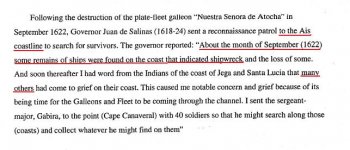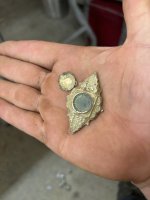Hello,
I wanted to ask about the shipwrecks of the 1622, of the Marques de Cadereyta.
We all know about the Atocha and the Santa Margarita, but there were many others, like the Nuestra Señora del Rosario, that went down near the Dry Tortugas.
Why aren´t this other shipwrecks of the same 1622 fleet been explored, and only the Atocha and the Santa margarita??
Thank you.
I wanted to ask about the shipwrecks of the 1622, of the Marques de Cadereyta.
We all know about the Atocha and the Santa Margarita, but there were many others, like the Nuestra Señora del Rosario, that went down near the Dry Tortugas.
Why aren´t this other shipwrecks of the same 1622 fleet been explored, and only the Atocha and the Santa margarita??
Thank you.






